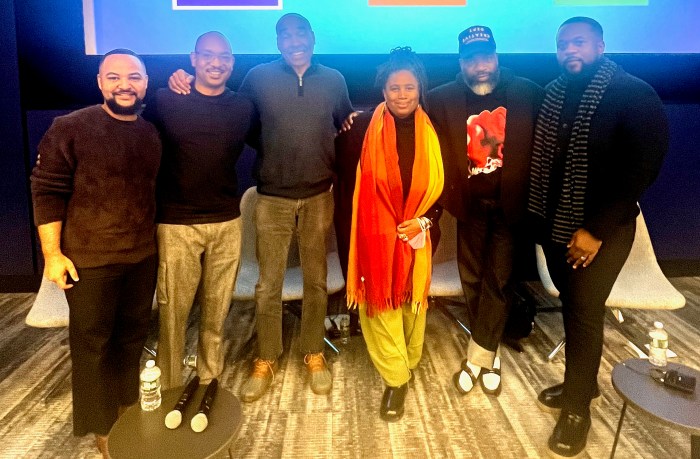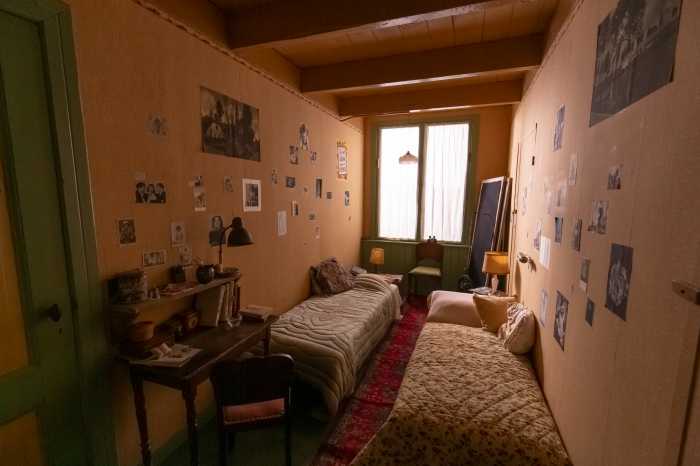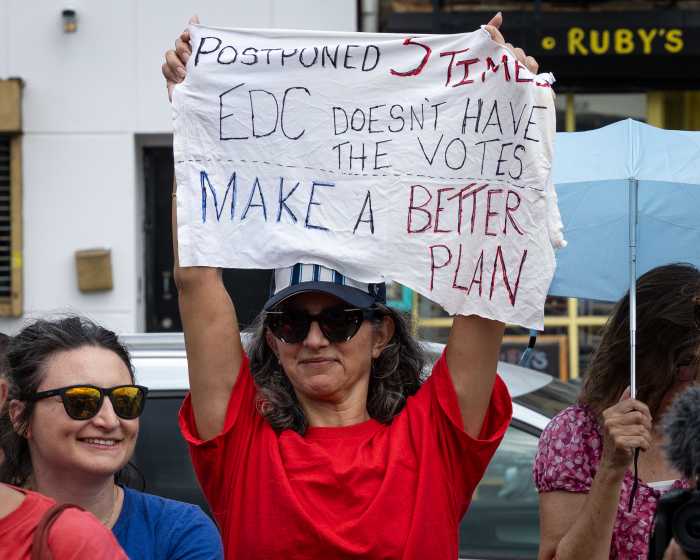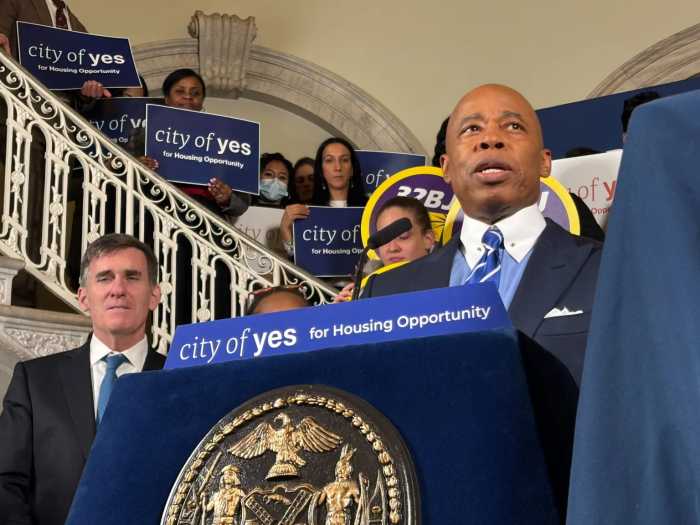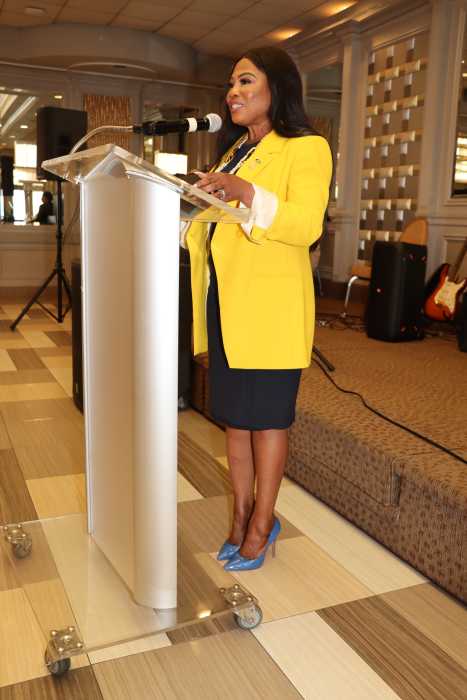Tribeca artist’s massive steel sculptures resonate through two worlds
By Steven Snyder | For 35 years, Tribeca artist Janet Goldner (www.janetgoldner.com) has been finding inspiration at opposite ends of the Earth. Intrigued by the tension she’s experienced between her two homes on different continents, Goldner exists as an insider and an outsider.
Starting in 1973, the New York University art graduate began traveling to Mali — having become entranced during an initial visit by a population and community brimming with history, energy and an eagerness to welcome newcomers.
This past summer, Goldner returned to Mali on her semi-annual pilgrimage, bringing back a catalogue of materials that reveal the ways in which her two cultures continue to overlap. This year, the culture clash involved President Barack Obama and the unlikely ways in which his name and face had been integrated into daily Mali life. “My first photo was in a cab, where I looked at the driver and realized he had an Obama sticker on the steering wheel,” Goldner says. “And then I started seeing these wonderful images everywhere — from T-shirts to cars to motorcycles and stickers…I came back with a considerable collection of photos.”
Mali’s “Obama Effect” may be new, but Goldner’s curiosity and enthusiasm is hardly novel. For more than a generation, the 57-year-old sculptor and photographer has been a regular visitor to Bamako (Mali’s capital). Since the mid-1980s, Goldner has brought back her African lessons to her Tribeca loft — where she has translated her multicultural inspirations into massive steel sculptures.
Her work is big and bold, fresh and fluid, toying with the malleability of her material. She welds holes and hinges into steel, revealing the weaknesses of this unmovable element, even as she blends state-of-the-art welding technology with ancient Malian beliefs and traditions that she weaves into the works.
Her finished hulks of steel — conceived on Warren Street — have been shown around the world. Across the decades, Goldner’s work has been chosen for display at exhibits in Tompkins Square Park, Italy and West Germany. They’ve also been purchased for permanent display at the American embassy in Mali (she visits that display every year, upon her return to the country).
Upon her return from Africa this summer, Goldner hit the New York pavement sprinting. Already this fall, two shows have featured Goldner’s work — exhibits in Garrison, New York and at the Brooklyn Public Library. More sculptures go up November 19 at Central Booking — a new art space in Dumbo — in a show titled “Anthropology, Revisited, Reinvented, Reinterpreted.” Goldner is also prepping some of her Mali photography for display beginning in January at Kiva Cafe on Reade Street.
Many of Goldner’s shows follow in the tradition of a 1997 exhibition she participated in at Sara Roosevelt Park on the Lower East Side, with the sculpture “Most Of Us Are Immigrants.” Goldner is heavily influenced by the issues of being a member, versus a newcomer, of a society — of how the traditions of the past can shape, and be shaped by, the present.
At her new Central Booking show, Goldner’s engrossing sculpture “WhY (Ntlomaw)” is, as she describes it, “my take on what constitutes a book, using steel pages and welded hinges so that the pages can turn, almost like an accordion.” Hanging from the ceiling, and comprised of steel plates that are loosely interwoven, Goldner has cut out “the ntloma/Y-stick form” on the front panels — representing “an architectural pillar, in the form of a forked stick used as the support for traditional Malian adobe houses.” She has then inscribed the sculpture with text from her various writings on both Malian and American cultures, building a bridge between her two worlds. The effect is the creation of a shaded space that viewers can enter and occupy — just as Malian families and elders would use the structures to escape the brutal African sun.
Even as Goldner has created works about Mali from the perspective of an outsider, she has slowly become an insider — winning Fulbright fellowships that have allowed her to dig deeper into this African nation while teaching art to her new neighbors. Her most recent trip to Mali this summer found Goldner teaching a three-week class to African artists about how to analyze, critique and refine their artistic visions. The more she’s visited, worked and taught in Mali, the more she’s come to be recognized as a familiar presence.
Much of her photo work today focuses on what it’s like to a permanent member of Malian culture — such as a photo gallery that focuses on a special salon in Bamako where residents go in advance of special occasions. “It’s here where they come to prepare for big events, where they get henna paintings on their hands — these incredibly intricate drawings that are so fine and detailed and beautiful.”
A good deal of her sculpture work also focuses on the issues and stories that are to be found at the core of Malian life. Just last year Goldner finished a work she dubbed “The Point of Water: The 5th Cardinal Point with North, South, East, West.” It is a detailed multi-piece work of steel designed to sprawl across a wall. “In Bamana thought, along with north, south east and west there is a fifth cardinal point: the point of water. Access to water determined where villages are located,” Goldner says in her introduction to the piece. Her sculpture is punctuated with circular molds, which represent water and where people have gathered around water.
As a sculptor, Goldner’s work is both big and small, imposing as well as indefinite. She embraces the chance to weld deep holes or fissures into her works, as well as the chance to break up a hunk of steel into smaller and more finite pieces. Looking at the many objects of “The Point of Water,” one’s eyes are sometimes drawn less to the objects on display than the significant space to be found between.
It seems slightly ironic, that a steel sculptor should be so focused on toying with the rigidity of steel — just as it is slightly ironic that Goldner’s sense of being both an insider and outsider should apply not just to her time in Mali but also her existence in New York. Throughout the decades, she says she’s watched Tribeca change dramatically. Chain stores have started to dot the streets that were once lined by independent stores, cafes and spaces. Just as the residential real estate market has followed the trends of the surrounding commercial real estate market, many artists forced to flee to the Lower East Side, Williamsburg and beyond.
Goldner says she once used to weld right in her loft on Warren Street, but gradually neighbors voiced their concern about the gas deliveries, and she was forced to rent out a Williamsburg space to house her torch. “It’s what always goes on. Artists make areas desirable, and then get priced out. Even in Williamsburg, I had to find a second studio space because my first one got converted into condos,” Goldner says about the changing façade of her New York community. After Sept. 11, 2001, she says the lack of foot traffic downtown decimated the shops she used to patronize — leaving behind a much different community.
Even as things change, Goldner notes that in some ways, they stay the same. “Things change everywhere, but the way I’ve come to think about it is that I have two wonderful communities on both sides of the world,” she says. “I find it very sustaining. It keeps me inspired all the time.”

